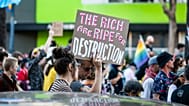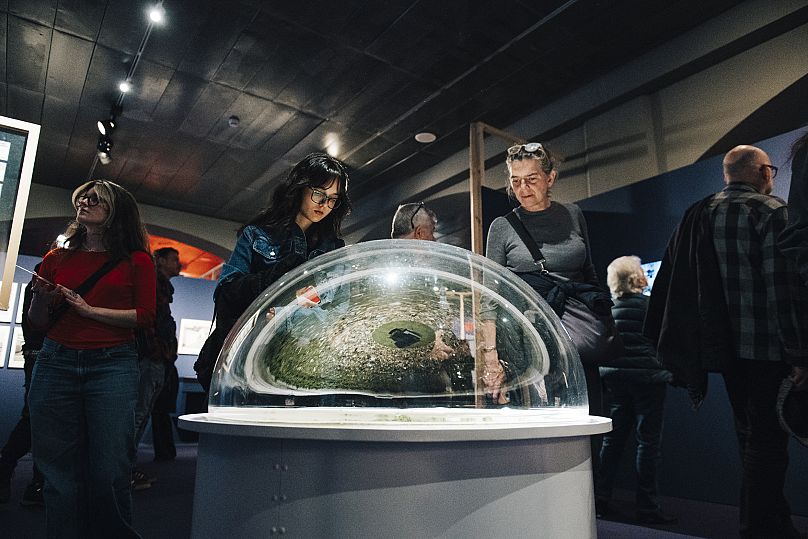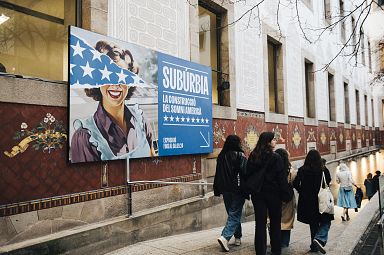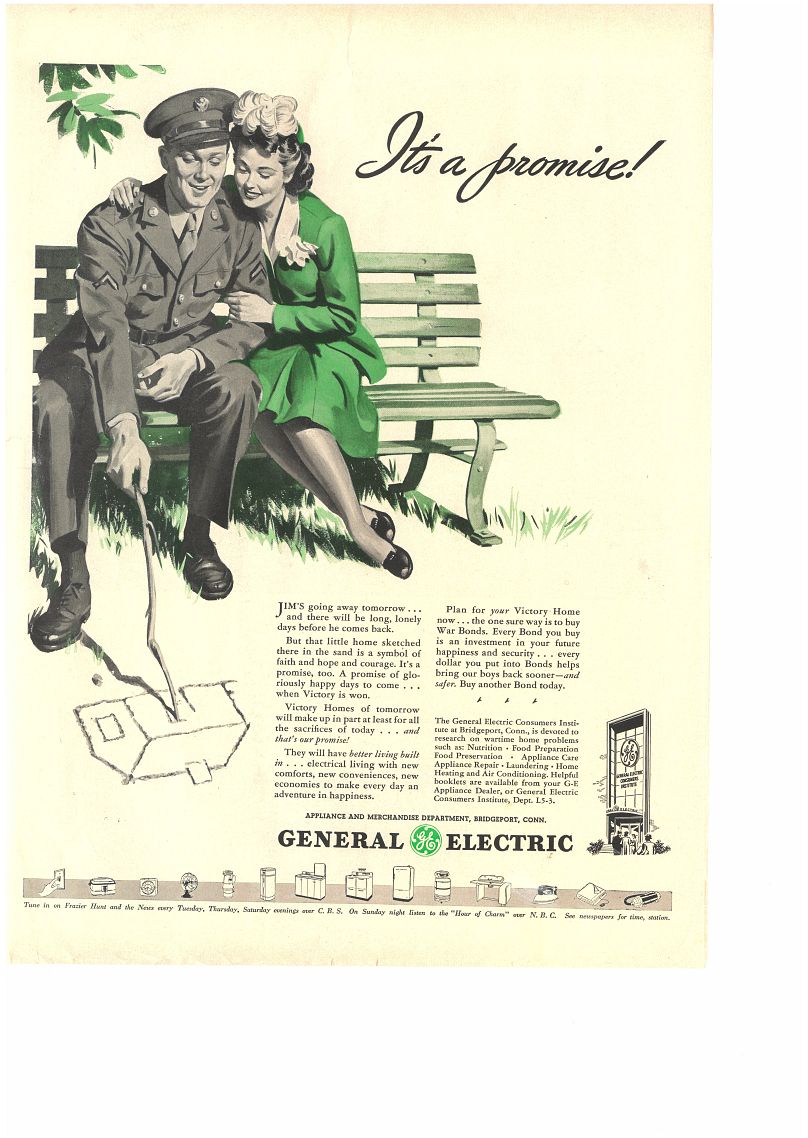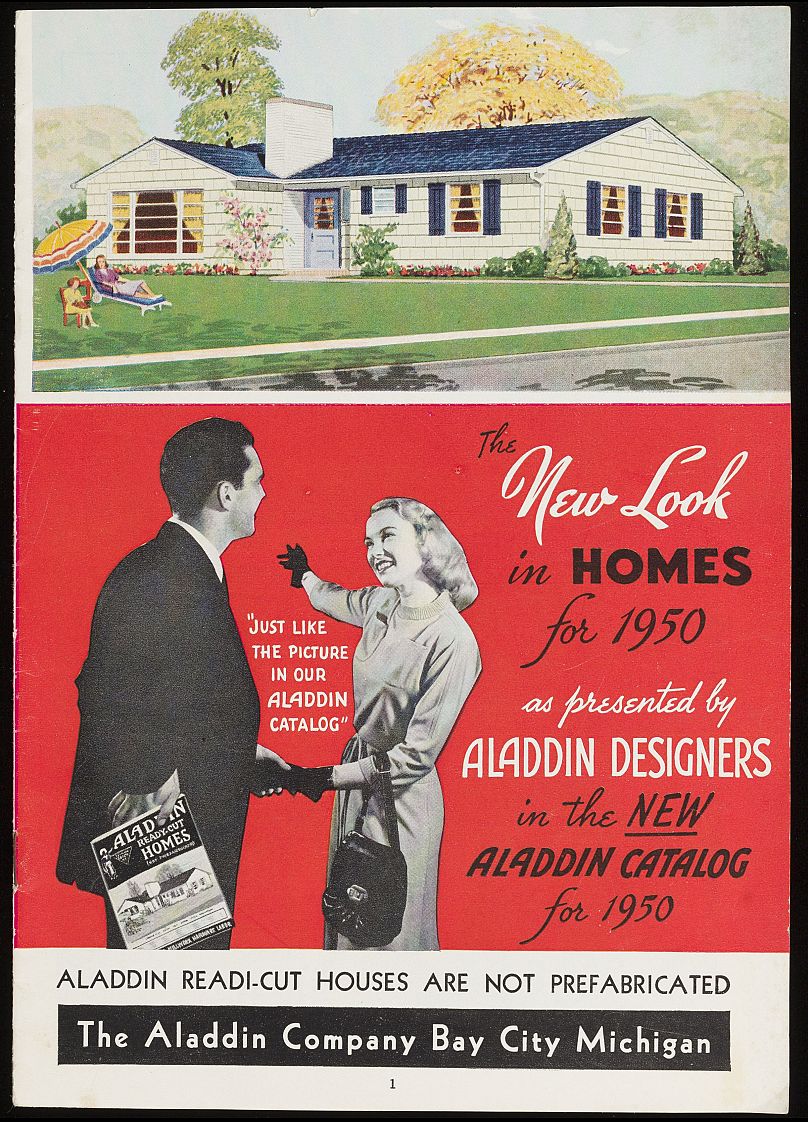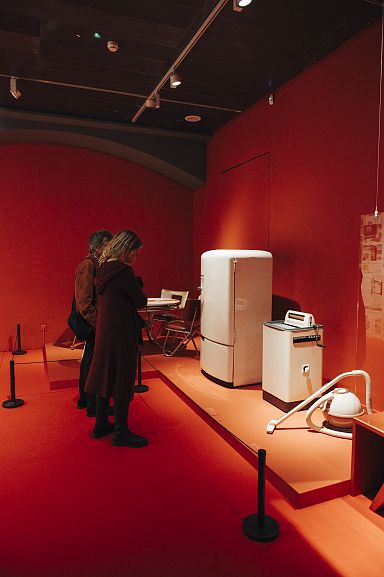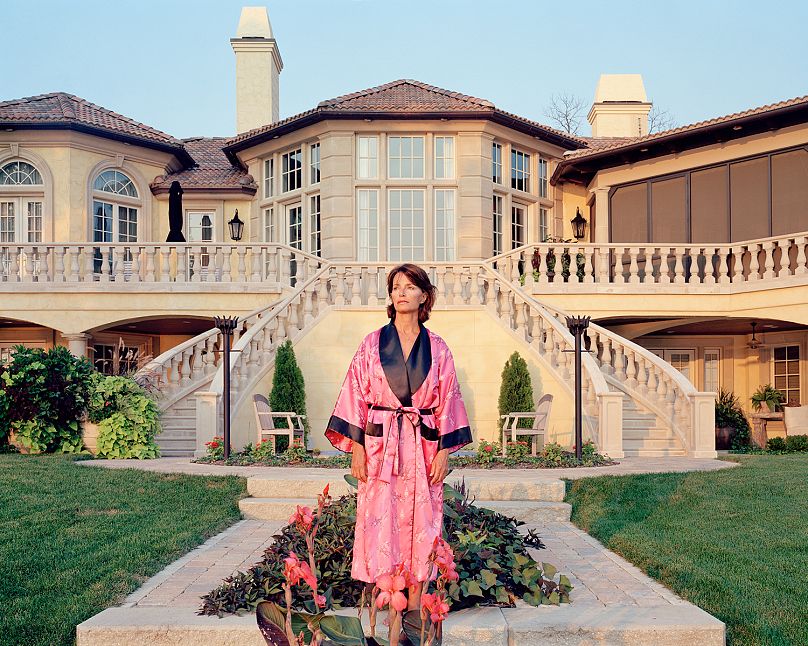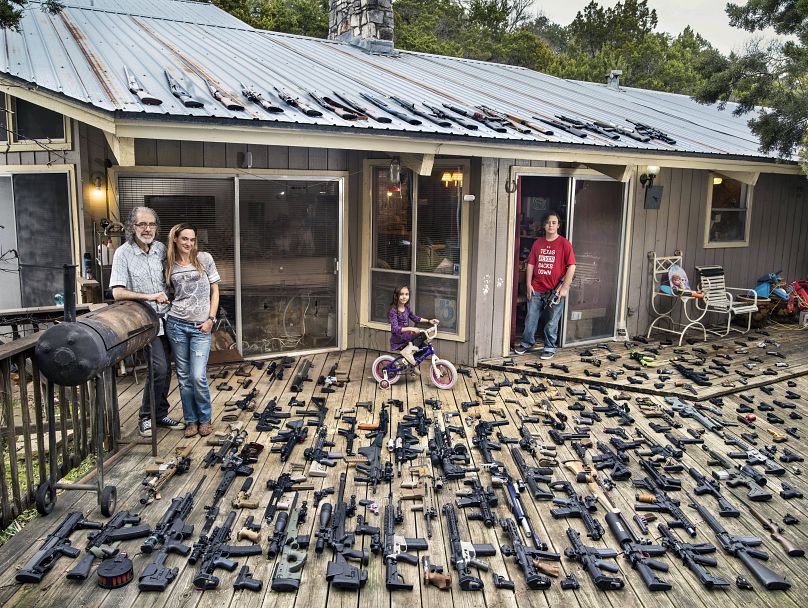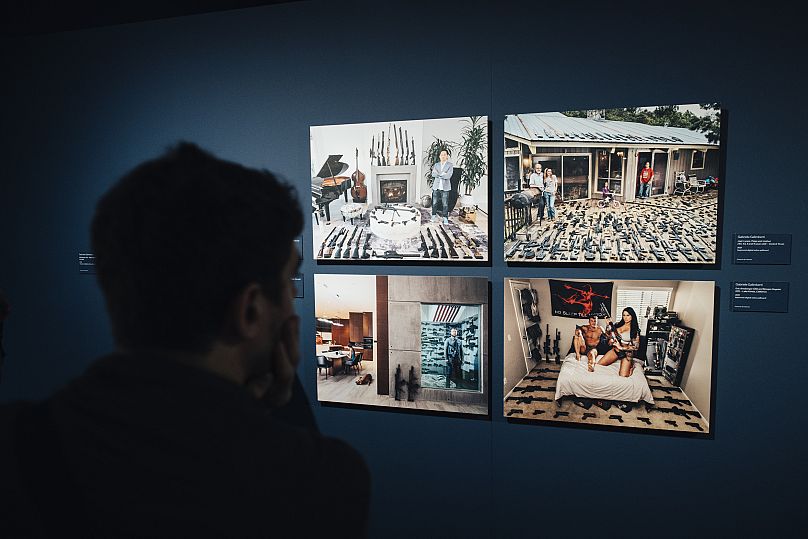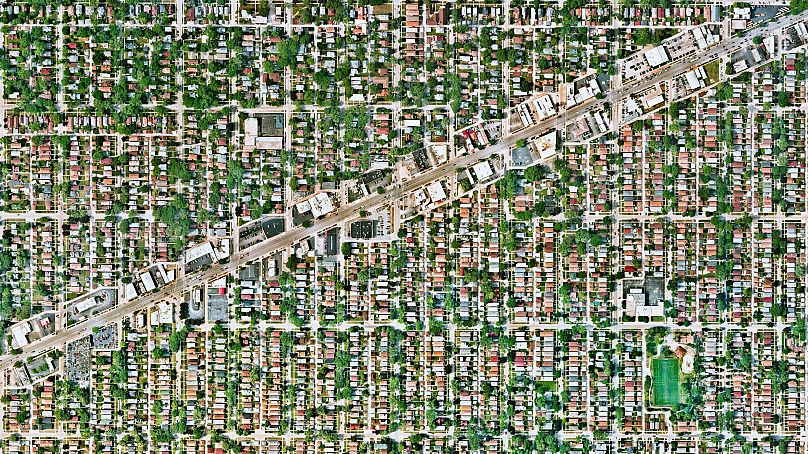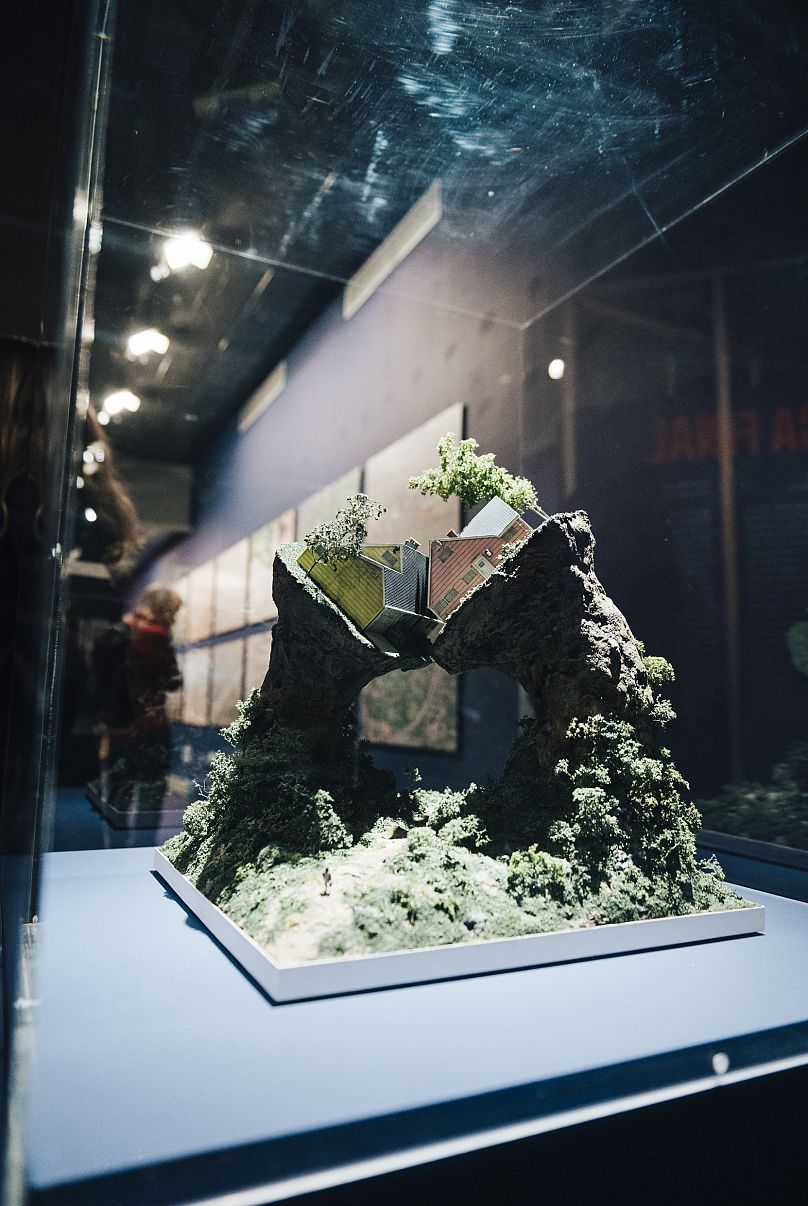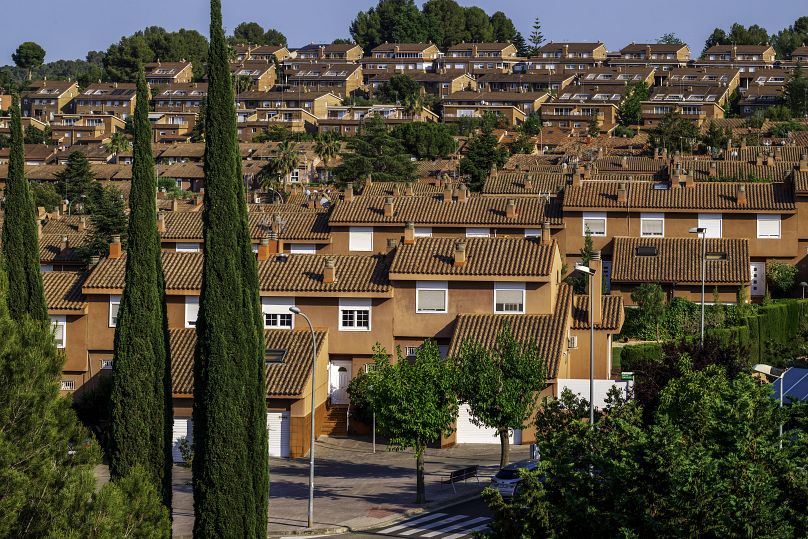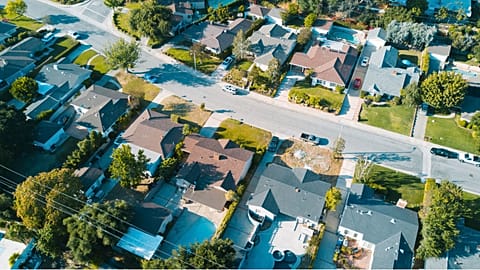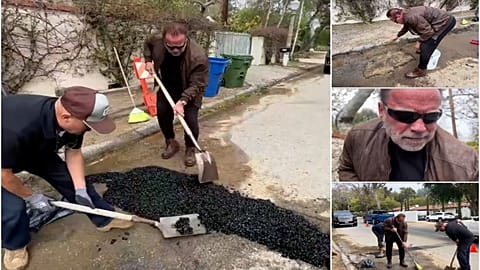“Suburbia. Building the American Dream” at the Centre de Cultura Contemporania de Barcelona tackles the enduring legacy of a US urban planning model gone global.
What does “suburbia” really represent? According to the director of the Centre de Cultura Contemporania de Barcelona (CCCB), it’s a space that’s as much physical as mental.
“The city is by nature a space that’s contradictory, both utopian and dystopian at the same time, full of potential and freedom and also conflict,” Judit Carrera told a news conference on Tuesday (19 March), to mark the opening of the CCCB’s new exhibition “Suburbia. Building the American Dream.”
“The North American suburb is a mirror that allows us to think critically about the city we have and the city we want,” she continued. “It is a reminder that the shape of the city has profound political, social and cultural consequences, and that architecture and urban planning are fundamental pillars for building more democratic cities.”
The stereotypically American concept of suburbia – with its cookie-cutter single-family homes, manicured front lawns and spacious driveways – has been replicated incessantly in pop culture, so much so that its ideals and illusions have spilled over across the Atlantic, influencing European urban planning as well.
Through this exhibition, which takes a chronological look at US suburbs from the 19th century through to the present, Carrera hopes to re-examine the role of cities today.
It features work by photographers Jessica Chou, Gabriele Galimberti, Gregory Crewdson and artists Thomas Doyle, Weronicka Gęsicka, Alberto Ortega and Kate Wagner, among others.
“This exhibition reminds us that culture and imagination are very powerful in spreading, in this case, a model that has become a universal model,” Carrera said. “With this exhibition, we want to put the city back at the centre of the cultural debate.”
The origins of the ‘American Dream’
Residential neighbourhoods, which sprung up in the US during the industrial revolution, became the aspirational ideal in 1950s America, shaping cities and transforming the way urban areas function.
The exhibition explains how these neighbourhoods were born – after World War II, housing was churned out at breakneck speed and new neighbourhoods were built to support war veterans and their families, who had no space to live in densely packed cities.
Later, upper-middle-class families with disposable income, who were almost exclusively white, moved to the outskirts of cities to have more space, a garden and peace of mind.
But suburbs like these were really made possible by the commercialisation of personal vehicles and Ford’s Model T. Roads were built to help people get around (and encourage them to purchase American-made vehicles) and individuals took their own family cars to reach their various destinations.
This suburban model has had many repercussions on the development of urban areas in the United States, the exhibition argues, leading to increased loneliness and isolation (particularly for women, who were excluded from the workforce) or growing poverty and crime in city centres (which disproportionately affected people of colour).
From dream to nightmare
The idealised vision of white suburbia came crashing down in the 1960s, as suburbs became more diverse and racism and paranoia set in. The exhibition dedicates an entire section to what it calls the “residential nightmare” that followed.
Through striking photographs by Angela Strassheim, Gabriele Galimberti, Amy Stein, Todd Hido and Gregory Crewdson, it presents a darker side to suburbia.
It then questions the enduring legacy of this urban model, as well as its environmental impact, through works like the apocalyptic bonsai by artist Thomas Doyle, which comments on the negative effects of housing developments on the natural world.
Satellite images by Benjamin Grant show the astounding vastness of the urban and suburban sprawl.
The exhibition’s curator Philipp Engel, a cultural journalist specialised in cinema and literature, said a unique aspect of this exhibition is the variety of different mediums that have been included to illustrate suburbia’s evolution.
“It has ended up being a multidisciplinary exhibition where you’ll find everything from an installation about sitcoms – because sitcoms were practically born with the massive suburbs of the 1950s, perhaps to promote or reflect this lifestyle,” he told the news conference. “Cinema also immediately reflected it – all great studios have a street that evokes suburban America. We also have sculptures and paintings.”
Exporting an ideal
Thanks to the ubiquitous cultural representations and an aggressive campaign championing the “American dream,” the suburban model spread beyond US shores – and has been adopted in Europe as well.
The CCCB exhibition draws parallels with major Spanish cities Barcelona and Madrid, which have replicated the suburban housing model.
The appeal of suburbs has endured, enjoying a Renaissance during the Covid-19 pandemic as people re-evaluated their priorities for their homes, Engel explained.
In Barcelona, researchers predict that over the next five years nearly 70,000 people will leave urban areas for semi-dense or rural areas.
“It’s a model that’s been exported all over the world,” Engel said. “That’s the disturbing part, because it’s clear that it’s unsustainable, but at the same time it’s still very attractive, which the pandemic showed us. Because who wouldn’t like to have a house with a garden during lockdown?”
“This exhibition tries to answer all these questions that remain, and look at what the political motivations might have been that promoted this lifestyle in the first place.”
"Suburbia. Building the American Dream." is now open to the public at the CCCB in Barcelona and runs until 8 September.




